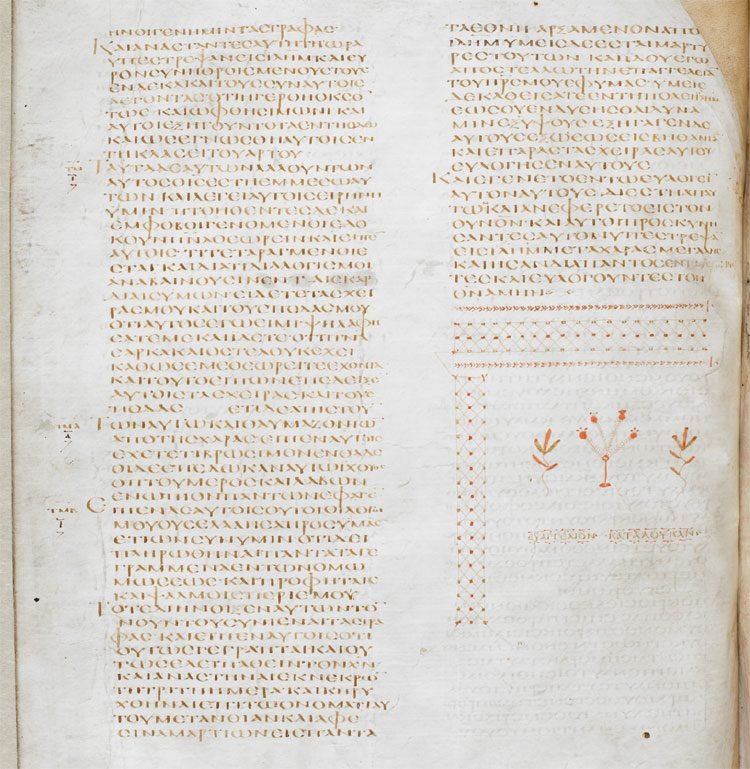Return to: Ancient Biblical Manuscripts
Copied in the 5th century, Codex Alexandrinus is one of the three early Greek manuscripts that preserve both the Old and the New Testaments together.
Its name (‘Book from Alexandria’) derives from the city of Alexandria in Egypt, where it was preserved before the Greek Patriarch of Alexandria, Cyril Lucar (d. 1638) brought it to Constantinople in 1621. As Greek Orthodox Patriarch, Lucar had close ties to Britain and the Church of England, which supported him in many of his activities. He presented this manuscript as a gift to the ruling monarch, Charles I (r. 1625–1649) in 1627. Arriving in London through the English Ambassador to Istanbul, Codex Alexandrinus became part of the Royal Library. It survived the devastating fire of 1733, when the librarian Richard Bentley (d. 1742) rescued it himself from the flames. It subsequently entered the British Museum and then the British Library.
Codex Alexandrinus contains the entire Bible in Greek, comprising the ancient Greek translation of the Old Testament (Septuagint), together with the New Testament. Its content is slightly different from a modern printed Bible: it contains several extra books, including Maccabees as part of the Septuagint Old Testament and the First Epistle of St Clement of Rome (d. 99) at the end of the New Testament. It is especially noteworthy for preserving one of the best texts of Deuteronomy and Revelation, and it is the oldest manuscript of the second and third books of Maccabees.
The manuscript was probably the work of three scribes. The beginning lines of each book are written in red ink and sections within the book are marked by a larger letter set into the margin. The text is written continuously in a large square uncial hand in two columns. Titles of each of the books of the Bible are marked by a stylised decorative colophon (a distinctive ornamental tailpiece) throughout the manuscript. These colophons frequently contain images of fruit or vegetation and are some of the earliest examples of book illumination to survive.

Return to: Ancient Biblical Manuscripts
